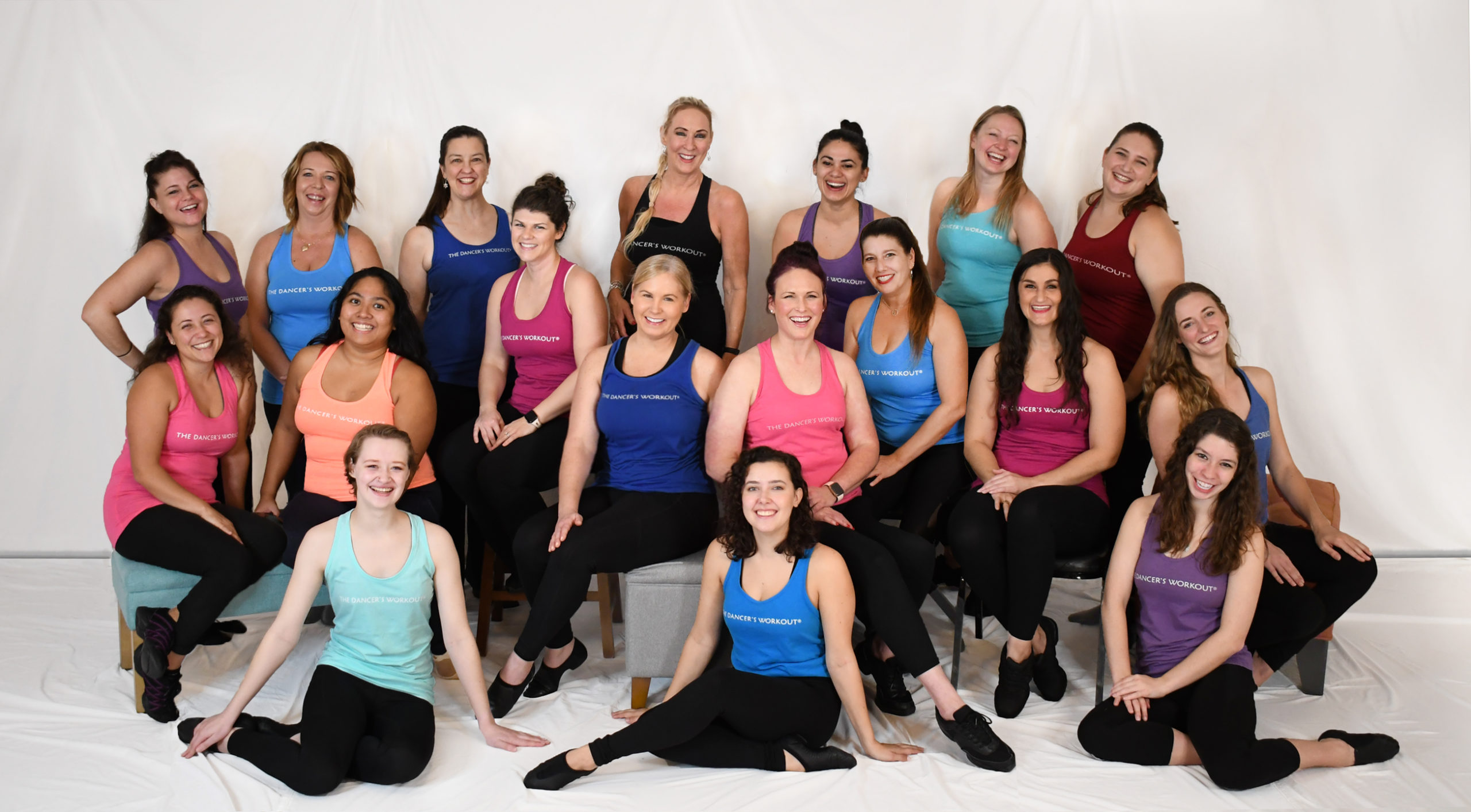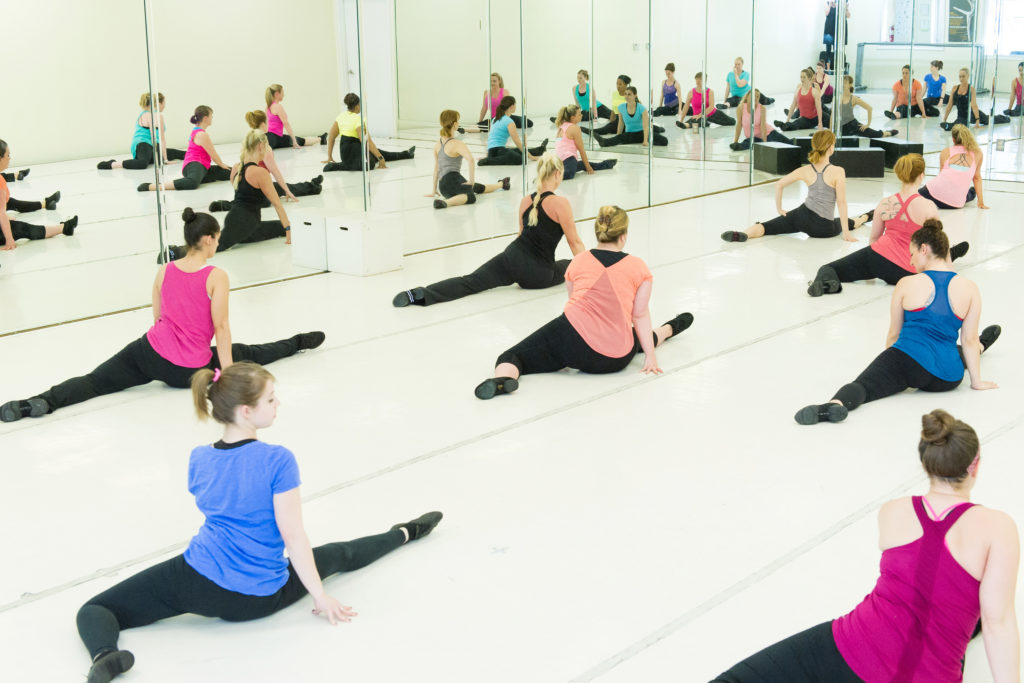
Let’s face it: Adult students can be a challenging demographic for dance teachers and studio owners. Despite numerous requests for classes, their actual class attendance can be disappointing.
As the founder of The Dancer’s Workout®, an adult dance-fitness program for ballet, jazz and contemporary dancers, I’ve learned that adult students are not inherently unreliable, as many of us initially assumed. Instead, their absences are often related to logistical factors like inconvenient class times and the actual types of adult classes offered. Mothers of small children, for example, might not be able to make classes that are held around their children’s bedtime. Similarly, young professionals who have been at work all day won’t consistently attend a dance class that is scheduled after dinner. And our best adult students sometimes aren’t even seeking a traditional ballet, jazz or hip-hop class. In short, the adult demographic is made up of busy people who have a multitude of needs that our classes must address if we want to begin seeing strong attendance numbers.
Based on my own personal experiences and discussions with other adult dance instructors, I modeled my adult dance program around six key elements that have led to my classes being consistently full (and often waitlisted!).
Here are six steps that can help you transform your adult dance program into a strong, self-sustaining business:
1. Serve the Ideal Type of Adult Student
While we want our adult programs to be all-inclusive (beginners through advanced), I’ve consistently found the most reliable adult students to be former dancers, ages 24 to 50-plus, who have quit dancing for years (decades, even) after having trained in ballet, jazz and contemporary dance during their middle and high school years. Their deep love of dance, their sadness and regret throughout their nondancing years, and their exhilarating return to dance often create and inspire our most dependable intermediate-level adult students. Consider restructuring your adult program around the needs of intermediate-level former dancers. While finding new current adult dancers can be a bit challenging, attracting and retaining former dancers to your intermediate-level adult classes can be both emotionally and financially rewarding. You can simultaneously attract adult beginners by offering separate, beginner-level feeder classes.
2. Provide a Safe Zone Where Everyone Is Technically Challenged but Not Judged
A former dancer’s journey back to dance is usually complicated by their disappointment over how much they have lost, either in terms of body conditioning, dance technique or both. When we establish a safe, nonjudgmental culture in class, we help unravel the perfection mindset that often keeps former dancers away. What we’ve learned is that adult dancers don’t mind being challenged; they just don’t want to be judged, especially when trying to get back in the game. So instead of breaking our adult students into groups or making them travel across the floor individually, it might be better to keep them moving together throughout the entire class. This helps adult students feel less self-conscious because they aren’t worrying about being watched. Additionally, we can minimize peering eyes from the lobby by holding our adults-only classes in our most private studios. Being sensitive to these issues helps increase the likelihood that former dancers who are in the process of returning to dance will indeed return after their first class.
3. Create a Cultural Environment That Becomes Self-Sustaining
First impressions are important, and the way new adult students are welcomed into an already established group of adult students is pivotal to the success of the program. Ask new students to arrive at least 10 minutes before class time. Take that opportunity to introduce yourself, learn about their dance backgrounds and needs, and introduce them to the other students. Model and encourage the type of friendly, welcoming behavior you expect from your adult dancers, as this helps initiate everlasting friendships among the students and cements consistent class attendance. Ultimately, we find that busy adults who receive meaningful social benefits, in addition to the physical and emotional rewards of dancing, are much more likely to return to class and encourage their friends to come as well.

4. Offer an Experience, Not Just a Class
People who share intense experiences together usually develop tight, everlasting bonds. This explains why corporate team-building experts put strangers in groups and assign challenges for them to do together. Success in these group situations engenders a deep sense of accomplishment that binds people together. Similarly, hard dance classes offered in safe environments push students to their cardiovascular and technical limits and provide an exhilarating sense of accomplishment and togetherness. This physical and emotional experience can be a rarity for some adult dancers and might even trump all other class experiences and options available to them.
5. Provide Choreography That Is Fun, Safe and Challenging for the Trained, Adult Dancer
Classes that deliver choreography specifically tailored to this demographic can generate very strong attendance. Adult dancers want fun, engaging, safe and challenging choreography that warms them up carefully, helps improve flexibility, and provides a safe dance cardio experience. Instead of traditional classes, I have found that adult dancers seem to prefer low-impact dance-based fitness classes that are mindful of aging joints while offering intermediate-level ballet, jazz, contemporary and hip-hop dance moves, plus body-conditioning exercises. Classes that honor the dancers’ ballet training (with big, beautiful waltzes and balancés, for example) and allow them to “play” (sexy jazz moves) are always appreciated. Understanding how to integrate adult limitations into exciting intermediate-level choreography is key to designing your adult classes. A Google search could be a great resource for coming up with ideas for this group.
6. Make Sure Your Class Is Effective as a Daily Fitness Solution for Adults
Your primary competition for this demographic are gyms and mainstream fitness outfits. Hourlong fitness classes are affordable, offered frequently at convenient times, and designed to get students into shape. They don’t run in sessions or semesters (which enables newcomers to start any day of any week). If you want to inspire adult dance students to set aside their gym memberships and funnel their fitness budgets to your studio, schedule your classes at times that are convenient for adults, offer three to six affordable one-hour adult classes each week (including drop-in classes), and incorporate carefully choreographed dance cardio and conditioning choreography into your classes.
The bottom line is: Adult students need something that many dance studios are not currently providing.By addressing their emotional, physical and logistical needs, you can attract, inspire and retain what can be seen as an elusive demographic.





